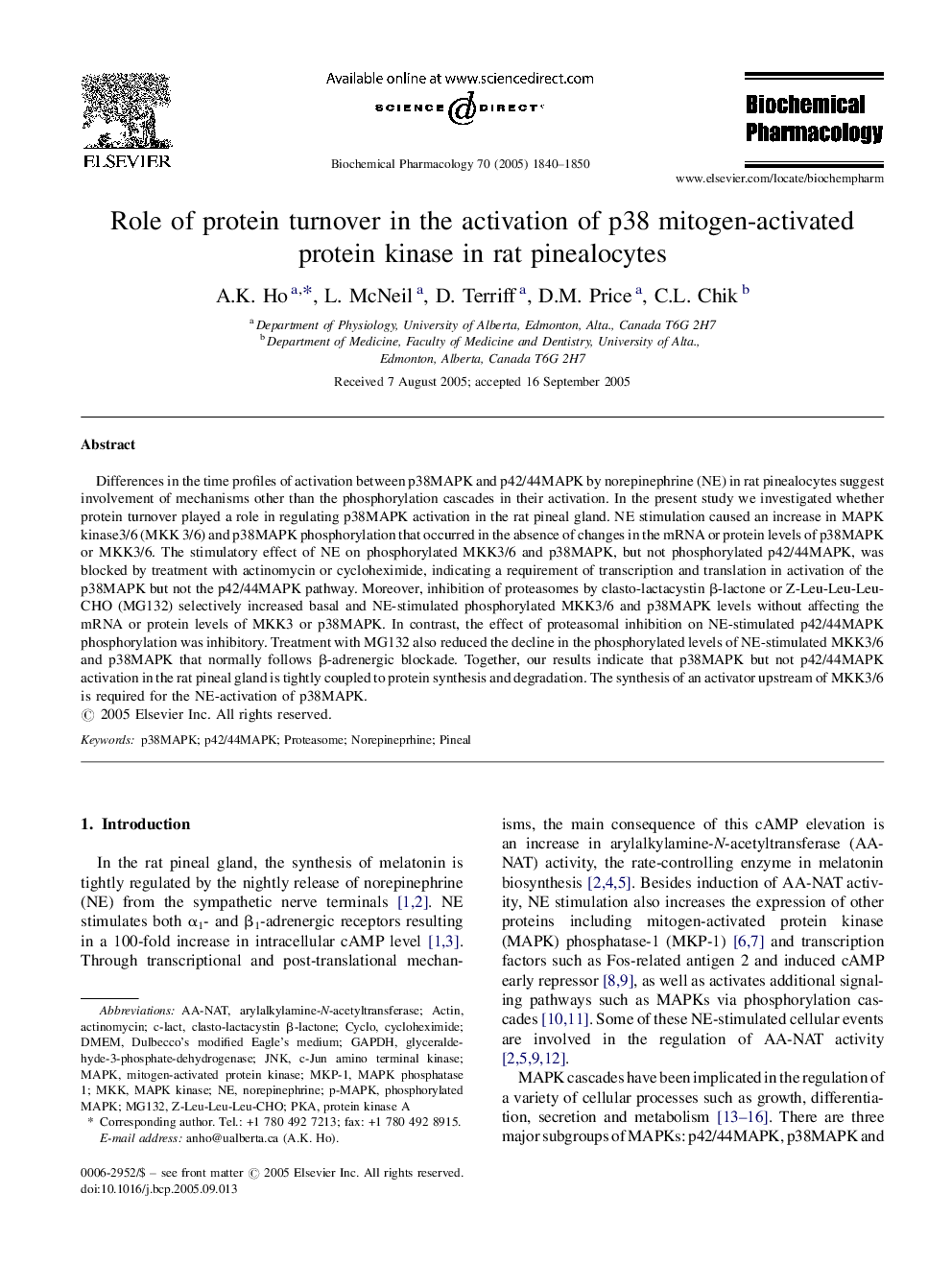| Article ID | Journal | Published Year | Pages | File Type |
|---|---|---|---|---|
| 9001482 | Biochemical Pharmacology | 2005 | 11 Pages |
Abstract
Differences in the time profiles of activation between p38MAPK and p42/44MAPK by norepinephrine (NE) in rat pinealocytes suggest involvement of mechanisms other than the phosphorylation cascades in their activation. In the present study we investigated whether protein turnover played a role in regulating p38MAPK activation in the rat pineal gland. NE stimulation caused an increase in MAPK kinase3/6 (MKK 3/6) and p38MAPK phosphorylation that occurred in the absence of changes in the mRNA or protein levels of p38MAPK or MKK3/6. The stimulatory effect of NE on phosphorylated MKK3/6 and p38MAPK, but not phosphorylated p42/44MAPK, was blocked by treatment with actinomycin or cycloheximide, indicating a requirement of transcription and translation in activation of the p38MAPK but not the p42/44MAPK pathway. Moreover, inhibition of proteasomes by clasto-lactacystin β-lactone or Z-Leu-Leu-Leu-CHO (MG132) selectively increased basal and NE-stimulated phosphorylated MKK3/6 and p38MAPK levels without affecting the mRNA or protein levels of MKK3 or p38MAPK. In contrast, the effect of proteasomal inhibition on NE-stimulated p42/44MAPK phosphorylation was inhibitory. Treatment with MG132 also reduced the decline in the phosphorylated levels of NE-stimulated MKK3/6 and p38MAPK that normally follows β-adrenergic blockade. Together, our results indicate that p38MAPK but not p42/44MAPK activation in the rat pineal gland is tightly coupled to protein synthesis and degradation. The synthesis of an activator upstream of MKK3/6 is required for the NE-activation of p38MAPK.
Keywords
Jnkc-jun amino terminal kinaseAA-NATarylalkylamine-N-acetyltransferaseCycloMG132MAPK phosphatase 1MKP-1p38MAPKpKaGAPDHDMEMMAPKMAPK kinaseMKKDulbecco's modified Eagle's mediumActinomycinactincycloheximidenorepinephrineProteasomeprotein kinase Amitogen-activated protein kinasePinealglyceraldehyde-3-phosphate-dehydrogenase
Related Topics
Health Sciences
Pharmacology, Toxicology and Pharmaceutical Science
Pharmacology
Authors
A.K. Ho, L. McNeil, D. Terriff, D.M. Price, C.L. Chik,
